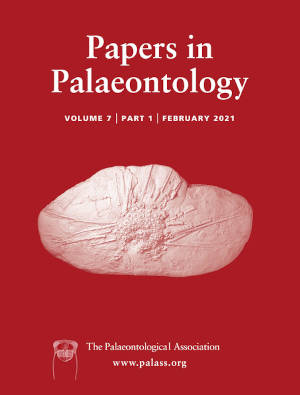Reg. Charity No. 1168330

The tribe Chlamydini was highly diversified in the marine Neogene of southern South America, reaching its maximum taxonomic diversity during the Miocene. However, the evolutionary relationships of South American taxa remain uncertain. This is the first phylogenetic analysis based on a large morphological matrix on Pectinidae, which focuses on South American taxa and species related to Chlamys s.s. The phylogenetic analysis is based on a matrix composed of 145 shell-characters scored for 48 species, and multiple searches were conducted using equal and implied weighting. Two new monophyletic clades are defined, Multiplicata and Pauciplicata. The first includes Dietotenhosen, Ckaraosippur, Zygochlamys, Moirechlamys (South America), the North-West Pacific Azumapecten, and the North-East Pacific Chlamys hastata. Pauciplicata is represented by Chokekenia (Patagonia, Argentina), Laevichlamys (tropical Atlantic and Indo-Pacific), Semipallium (Indo-Pacific), Swiftopecten (South America and North Pacific), and Jorgechlamys + Reticulochlamys (Patagonia, Argentina). All of these genera are monophyletic except for the paraphyletic Jorgechlamys. The oldest documented occurrence of the tribe is Semipallium foulcheri from the lower Oligocene, a derived taxon that pushes the divergence time of basal genera to the Eocene–Oligocene boundary, generating ghost lineages in all clades, except Jorgechlamys + Reticulochlamys. Pauciplicata and Multiplicata diverge in the early history of the tribe, at the Eocene–Oligocene boundary. Future analyses are necessary to gain a better understanding of the taxonomic arrangement of this poorly understood tribe. Further insights into the relationships of its deepest nodes may well resolve many ghost lineages.